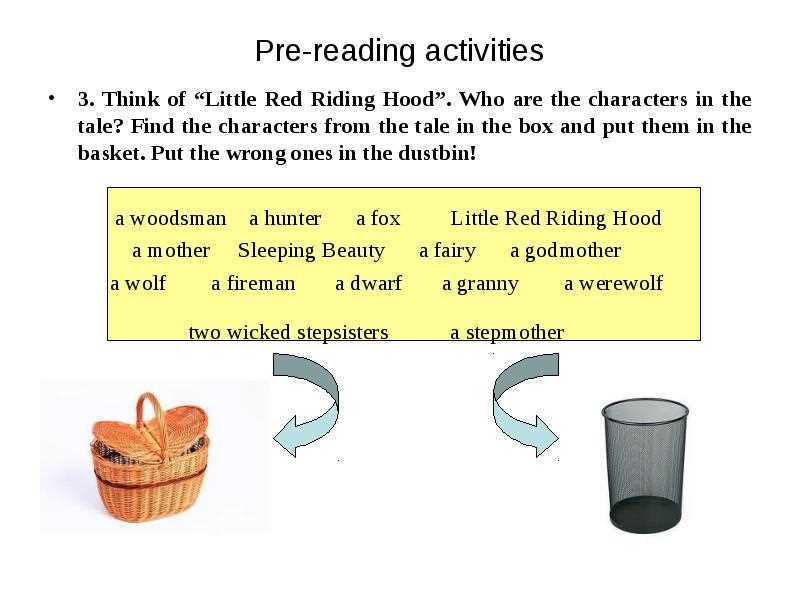
Prior to delving into Arthur Miller’s famous play, “The Crucible,” it is essential to understand the mindset and beliefs of the individuals who lived during the time of the Salem witch trials in 17th century America. This period was marked by a pervasive fear of the devil and a strict adherence to Puritanical values.
The Puritans, a religious group that settled in New England, had a deeply ingrained belief in the presence of evil and the constant battle between good and evil forces. They perceived any deviation from their strict religious practices as signs of the devil’s influence. These beliefs created a society where conformity and obedience were highly valued.
In order to comprehend the motivations and actions of the characters in “The Crucible,” it is necessary to adopt a Puritanical perspective. This means putting aside modern ideas and embracing their worldview, which emphasized a united community, the importance of reputation, and the belief in supernatural powers. Through this lens, we can begin to empathize with the characters’ decisions, even if they seem extreme or irrational.
Understanding Puritan Thinking: Crucible and Pre-Reading
When studying Arthur Miller’s play “The Crucible” or any other literature set in the Puritan era, it is important to have a solid understanding of the Puritan mindset and beliefs. The Puritans were a strict religious group that settled in New England in the 17th century, and their beliefs greatly influenced their way of thinking, their daily lives, and their interactions with others. By understanding the Puritan thinking, readers can gain deeper insights into the characters’ motivations and actions in “The Crucible,” making it a more enriching and thought-provoking reading experience.
One of the key aspects of Puritan thinking was their strong belief in the presence of evil in the world. Puritans believed in the concept of original sin, which means that all humans are born sinful due to Adam and Eve’s disobedience. They saw the world as a battleground between good and evil, with the devil constantly trying to tempt and corrupt them. This belief in the pervasive presence of evil led to a heightened sense of paranoia and a constant fear of being deceived by others or falling prey to temptation themselves. These fears are clearly reflected in “The Crucible” through the witch trials and the characters’ desperate attempts to protect themselves from perceived evil.
- The concept of predestination
Another important facet of Puritan thinking was the concept of predestination. Puritans believed that God had already predestined who would be saved and who would be damned, and their actions in life would not change this predetermined fate. This belief placed a heavy emphasis on personal accountability and the need to constantly prove one’s righteousness. The fear of damnation and the desire for salvation drove Puritans to lead disciplined lives, adhering strictly to their religious principles to demonstrate their worthiness to God. In “The Crucible,” characters like John Proctor struggle with the tension between their desire to stay true to their beliefs and the temptation to save themselves by falsely confessing to witchcraft.
Understanding Puritan thinking is crucial to fully appreciate the themes and conflicts presented in “The Crucible.” It allows readers to grasp the motivations and complexities of the characters, as well as the broader implications of their actions within the context of Puritan society. By delving into the mindset of the Puritans, readers can gain valuable insights into human nature, the dangers of unchecked power, and the consequences of mass hysteria.
The Crucible and Its Historical Context
The Crucible, a play written by Arthur Miller, is set in the 1692 Salem witch trials in Massachusetts. It explores the mass hysteria and paranoia that swept through the Puritan community during this dark period of American history. The play is not only a dramatization of the trials, but also a commentary on the dangerous consequences of religious extremism and the abuse of power.
Puritanism was a strict religious movement that emerged in England in the 16th and 17th centuries. Puritans believed in a literal interpretation of the Bible and sought to create a pure and righteous society. They viewed the world as a battleground between good and evil and believed that the devil was constantly trying to tempt and corrupt them. This mindset created a culture of fear and suspicion, where every action was scrutinized for signs of witchcraft or sinful behavior.
In The Crucible, Miller explores the mindset of the Puritans and the factors that contributed to the outbreak of the witch trials. He highlights the role of religious fanaticism, social tension, and personal vendettas in fueling the hysteria. The play also serves as a cautionary tale, warning against the dangers of unchecked power and the destructive consequences of false accusations.
Exploring Puritan Beliefs and Values
The Puritans were a religious group that emerged during the 16th and 17th centuries in England. They believed in strict adherence to biblical teachings and sought to purify the church of England from what they saw as corrupt practices. Puritan beliefs and values shaped their daily lives and had a profound impact on their interactions with society.
One key belief of the Puritans was that salvation could only be achieved through faith and good works. They believed in the concept of predestination, which meant that God had already determined who would be saved and who would be damned. This belief led to a strong emphasis on personal morality and a constant striving for perfection. Puritans were expected to lead honest and virtuous lives, diligently following God’s commandments.
- Godliness: Puritans placed great importance on religious devotion and the pursuit of godliness. They believed that every aspect of life should be centered around God and that one’s actions should reflect their commitment to their faith.
- Simplicity: Puritans rejected ornate rituals and ceremonies of the Anglican Church, favoring a simpler form of worship. They believed in the importance of plain attire and minimal material possessions, viewing luxury and extravagance as worldly distractions.
- Community: Puritans emphasized the importance of community and the collective pursuit of godliness. They established tightly-knit communities where everyone was expected to contribute to the common good. Church attendance was mandatory, and anyone who strayed from the community’s religious norms was subject to punishment.
Overall, the Puritans believed in living a disciplined and morally upright life, constantly striving to please God and adhere to his commandments. While their beliefs and practices may seem extreme by modern standards, they played a significant role in shaping the early American colonies and influenced the development of American society and culture.
Pre-Reading Tips for a Puritan Mindset
The Crucible is set in the 17th century, during the time of Puritanism, a strict religious movement that shaped the mindset of the characters in the play. To fully understand and appreciate the events and themes of The Crucible, it is important to approach the play with a Puritan mindset. Here are some pre-reading tips to help you think like a Puritan:
1. Embrace a Strong Sense of Morality and Piety
Puritans believed in living a pious and righteous life, guided by a strict moral code. They believed in the concept of predestination, where only those chosen by God would be saved. As you read The Crucible, try to adopt this Puritan belief system and consider how the characters’ actions align with their own sense of morality and piety.
2. Value Community and the Power of Collective Judgment

In Puritan society, community was highly valued, and individual actions were seen as reflections on the entire community. They relied on collective judgment and placed great importance on upholding community standards and maintaining social order. As you read The Crucible, pay attention to how the community’s judgment and the fear of social disruption drive the characters’ decisions and actions.
3. Be Wary of the Influence of the Devil
Puritans believed in the presence of evil forces, particularly the Devil, and saw their society as constantly under threat from his influence. They viewed misfortune and unexplained events as signs of the Devil’s presence. Keep this in mind as you read The Crucible, and consider how the characters’ beliefs about witchcraft and the Devil contribute to the hysteria and paranoia that grips Salem.
4. Examine the Role of Confession and Guilt
Puritans placed great importance on confession and the acknowledgement of guilt as a means of redemption. As you read The Crucible, consider the role of confession and guilt in the characters’ lives. How does the fear of guilt and the pressure to confess impact their actions? How do their confessions or lack thereof reflect their Puritan mindset?
By approaching The Crucible with a Puritan mindset, you will be able to better understand the motivations and struggles of the characters, as well as the underlying themes of morality, judgment, and the power of belief. It will help you delve deeper into the historical and cultural context of the play and fully appreciate its significance.
Unraveling Crucible’s Themes through a Puritan Lens

As we delve into Arthur Miller’s play, “The Crucible,” it is crucial to approach the text through the lens of the Puritan society in which it is set. By understanding the beliefs, values, and practices of Puritanism, we can decipher the underlying themes of the play and the motivations of its characters.
Puritanism and Religious Intolerance: Puritans were a strict religious sect that believed in the concept of predestination and the idea that God chose who would be saved and who would be damned. This belief fostered a deep-rooted fear in the community, as they constantly sought to ensure their salvation. This fear is mirrored in the play’s pervasive atmosphere of paranoia and suspicion, as the characters in Salem desperately try to root out any signs of witchcraft, which they believe would condemn their souls.
Hypocrisy and the Unseen Forces: Puritan society emphasized the importance of outward piety and strict adherence to moral codes. However, within the rigid structure of their society, hypocrisy was rampant. The play exposes this hypocrisy through the characters’ false accusations and their secret sins. The unseen forces in the play, such as Abigail’s manipulation and the girls’ pretense of being possessed, further highlight the deceptive nature of the community.
Power Struggles and Mass Hysteria: The Crucible explores the consequences of power struggles within a community. The Puritan belief in absolute authority led to a hierarchal society where those in power held immense control over others. The witch trials became an opportunity for personal gain and settling of personal scores, causing mass hysteria to grip the community. The play challenges us to examine the dangerous consequences of unchecked power and the impact it can have on an entire society.
Moral Judgment and the Individual: In Puritan society, moral judgment was deeply ingrained, leading to a strict adherence to rules and regulations. The characters in the play grapple with the weight of their own moral choices, struggling between their individual desires and the expectations of their community. The theme of moral judgment also encompasses the question of justice and the consequences of blindly following the crowd, as innocent individuals are accused and condemned based on mere words and false assumptions.
Unraveling the themes of “The Crucible” through a Puritan lens allows us to grasp the complexities of Salem society and the psychological effects of living in a community consumed by fear and religious fervor. By examining the play within its historical and cultural context, we can gain a deeper understanding of the characters’ motivations and the overall message of the play.
Essential Questions and Answers for Crucible Pre-Reading
Prior to reading Arthur Miller’s play “The Crucible,” it is important to have an understanding of the historical and cultural context in which the events of the play take place. This pre-reading activity aims to help readers think like a Puritan and consider the themes and motivations of the characters in the play. Here are some essential questions and answers to guide your pre-reading exploration:
-
1. What were the main beliefs of the Puritans?
The Puritans held strong religious beliefs that emphasized the importance of living a virtuous and pious life. They believed in predestination, the concept that God had already predetermined who would be saved and who would be damned. They also believed in the existence of a spiritual realm inhabited by angels, demons, and witches.
-
2. How did the Puritans view sin and its consequences?
Puritans saw sin as a serious offense against God and believed that those who sinned would face eternal punishment in hell. They placed a great emphasis on personal accountability and believed that God’s punishment for sin could also manifest in this life through various forms of misfortune or illness.
-
3. How did the Puritans view witchcraft?
The Puritans believed in the reality of witchcraft and perceived it as a grave threat to their religious community. They viewed witchcraft as a pact made with the Devil and believed that witches had the power to harm others through malicious actions or supernatural means. The Puritans were highly superstitious and feared the presence of witches in their midst.
-
4. What were some factors that contributed to the Salem witch trials?
The Salem witch trials were influenced by a combination of religious, social, and political factors. The intense religious fervor of the Puritan community, coupled with a series of supernatural events and rumors of witchcraft, created a climate of fear and paranoia. Social tensions, economic disparities, and a power struggle between different factions within the community also played a role in fueling the accusations and trials.
By considering these essential questions and answers, readers can develop a deeper understanding of the historical and cultural context of “The Crucible” and better empathize with the characters and their motivations. This pre-reading activity sets the stage for a more nuanced and insightful reading experience of Miller’s powerful play.